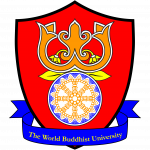
Buddhism as a Religion
An introduction to the history and forms of Buddhism, including analysis of the Sangha and what it takes to call yourself a Buddhist.
Table of Contents
- What is Buddhism as a Religion?
- Prerequisites
- The Course
- Introduction
- Sourcebook
- Part 1: The Sociology and History of Buddhism
- Part 2: The Sangha
- Part 3: Personal Practice
- Conclusion to the Class
- Feedback
- Further Reading
- Advanced Courses
What is Buddhism as a Religion?
Whether Buddhism even is a “religion” at all is, of course, a matter of some controversy. Is it a philosophy? A movement? A practice? An aesthetic? Who even counts as “a Buddhist”?
In defining the bounds of “who is Buddhist”, some “middle way” may be desirable, between:
- The conservative, “prescriptive” definition (The Buddha once said that only enlightened beings count as his followers!)
- And the completely liberal, “historical” definition (The Buddha’s life has materially impacted everything from ancient trade routes, to Islamic art, Christian conflicts, IKEA designs, software engineering practices… nearly every human life today.)
In searching for such a middle way, I take on Bhante Yuttadhammo’s definition of Religion here, and say that “Religion is whatever you take seriously.”
The religious forms of Buddhism, then, are the various ways that people have looked back to the Buddha for guidance and inspiration, and the many ways they have found to reshape their lives in response to what they’ve seen.
Prerequisites
This course assumes familiarity with the fundamentals of Buddhism, but no worries if you’re rusty: you’ll get a refresher below.
